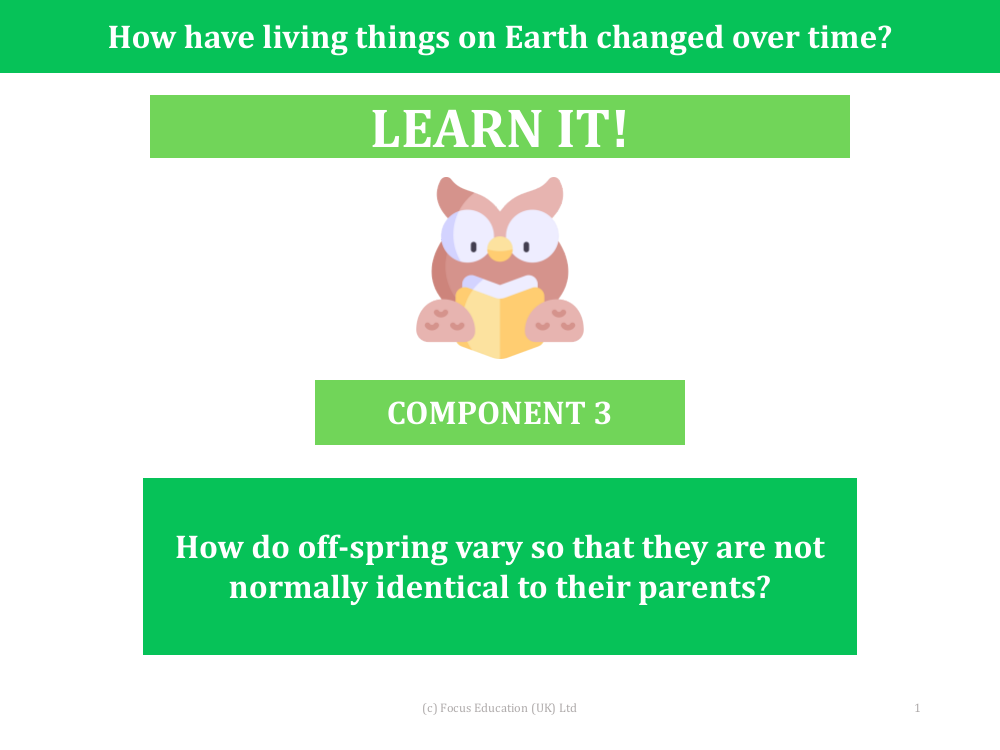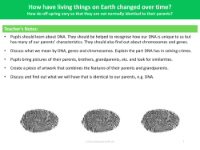How do off-spring vary so that they are not normally identical to their parents? - presentation

Science Resource Description
Understanding the uniqueness of each individual, a presentation on genetics delves into the reasons why offspring are not normally identical to their parents. It introduces the concepts of DNA, genes, and chromosomes to pupils, explaining that DNA—deoxyribonucleic acid—is a complex molecule with a double helix structure that contains the genetic blueprint for growth, reproduction, and function in living organisms. Genes, which are segments of DNA, carry specific instructions for traits such as eye colour, while chromosomes are structures that organise DNA within the cell nucleus. Humans, for example, have 46 chromosomes. The presentation highlights that children inherit half of their chromosomes from each parent, resulting in shared traits but also variations that contribute to each person's unique characteristics.
As part of the learning process, pupils are encouraged to explore their family resemblances through photographs, identifying similarities in features like eyes, nose, and hair. This practical exercise is supported by guidance on drawing accurate portraits, focusing on the correct proportions and layout of the face. The presentation also touches on the emotional expression in portraiture, encouraging pupils to experiment with capturing different emotions and moods through art, akin to the styles of famous artists like Van Gogh. By examining the details of facial features, such as the eyes, pupils are taught to observe and replicate intricate aspects, enhancing their ability to recognize and depict the unique traits that contribute to human diversity.

